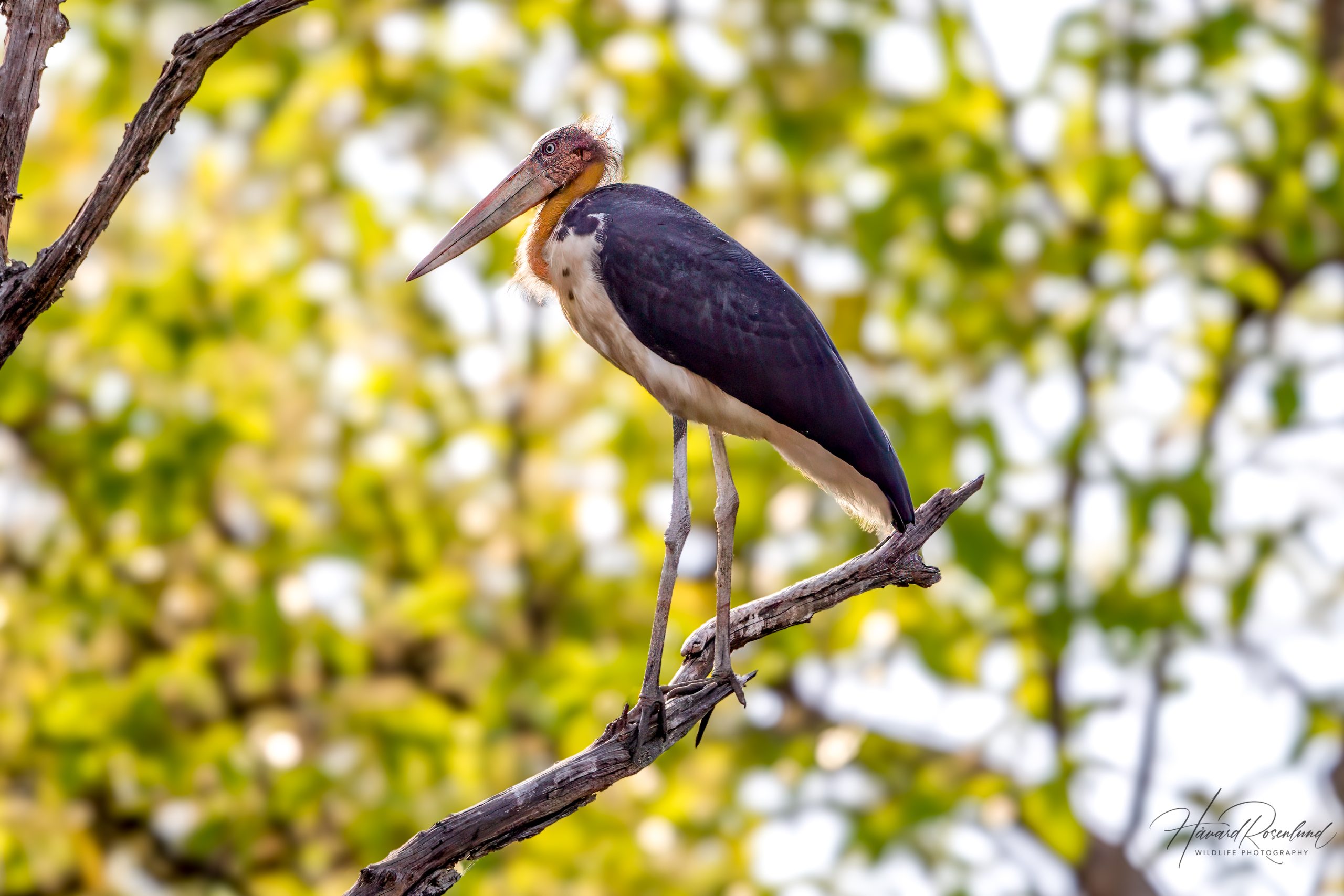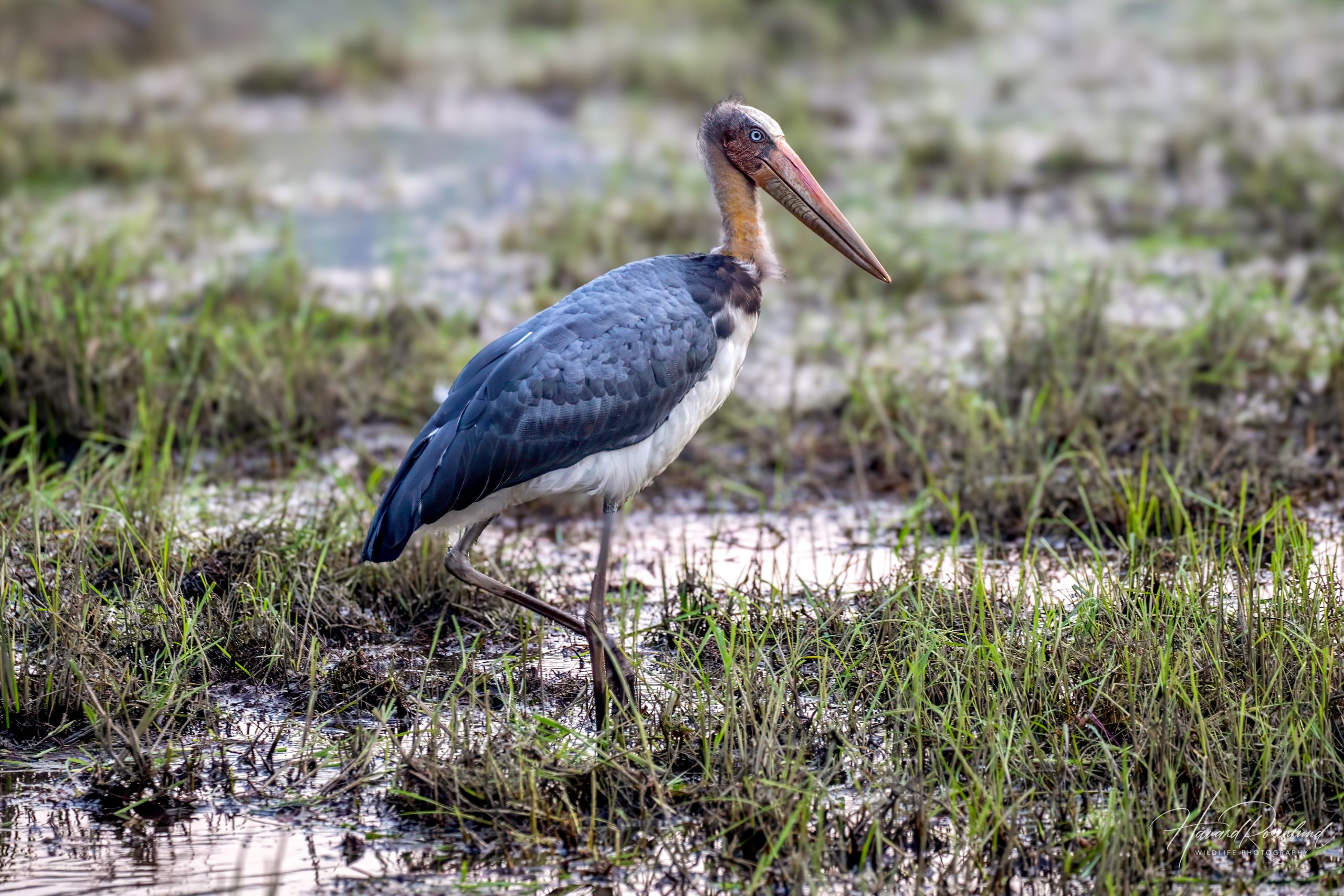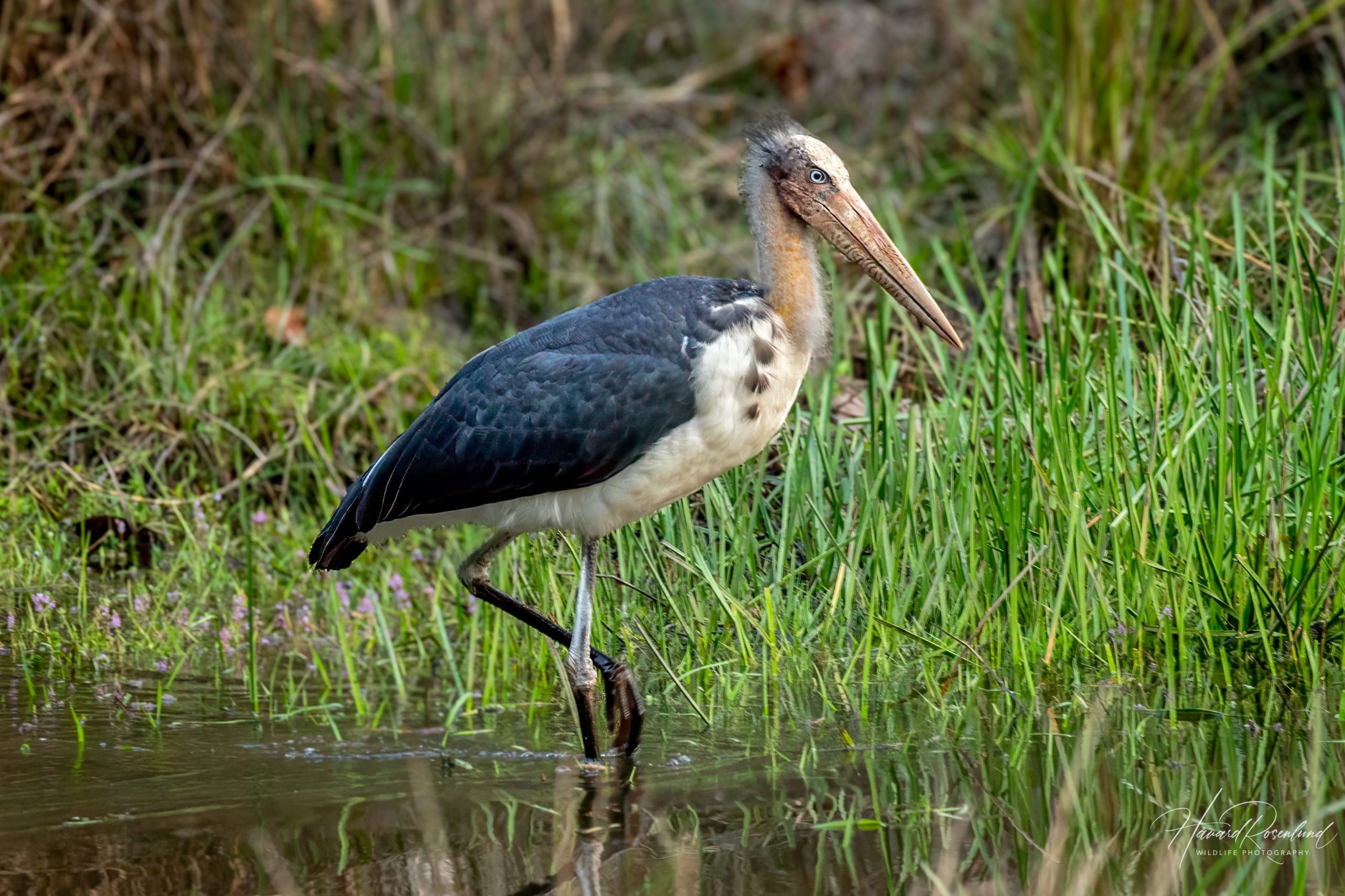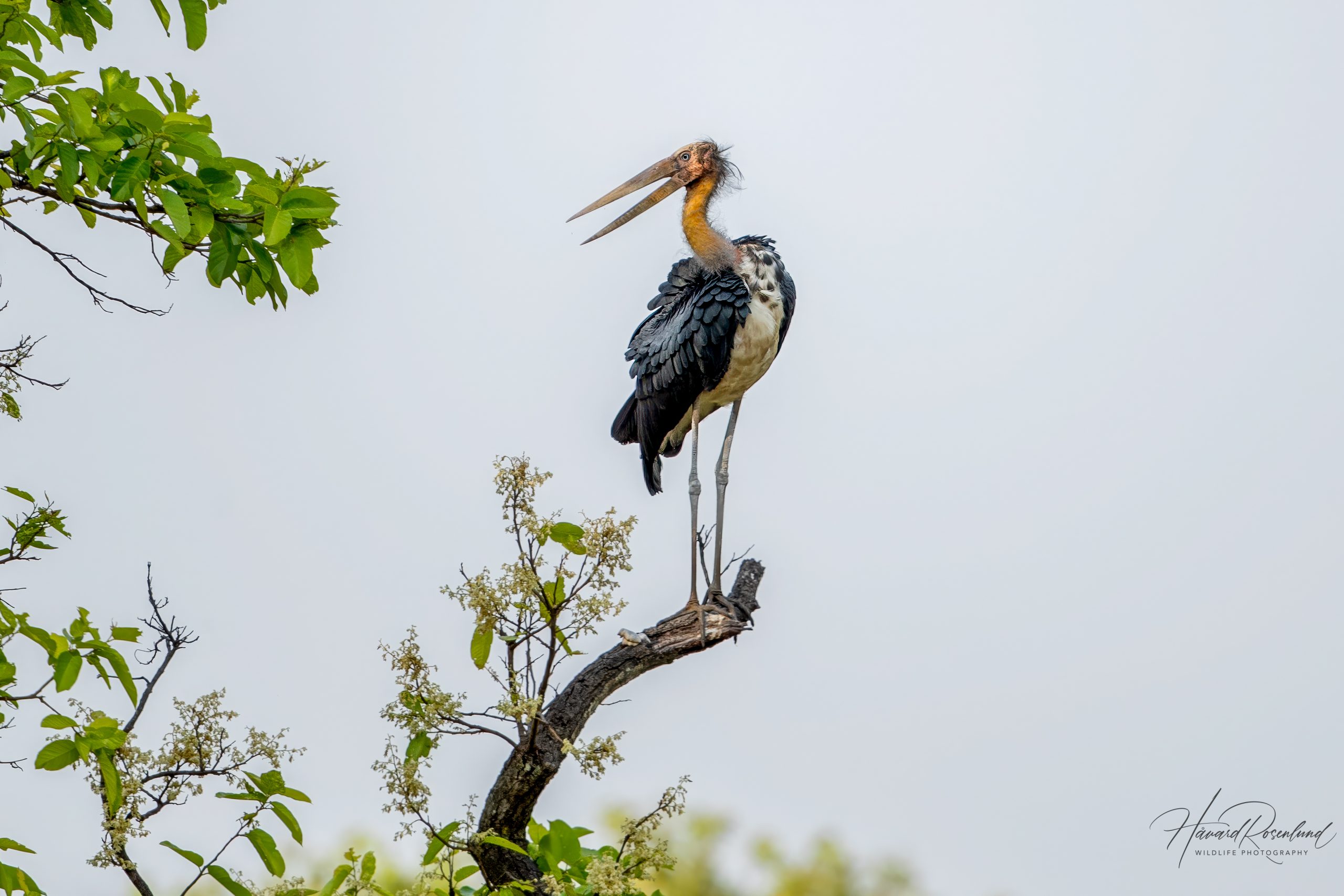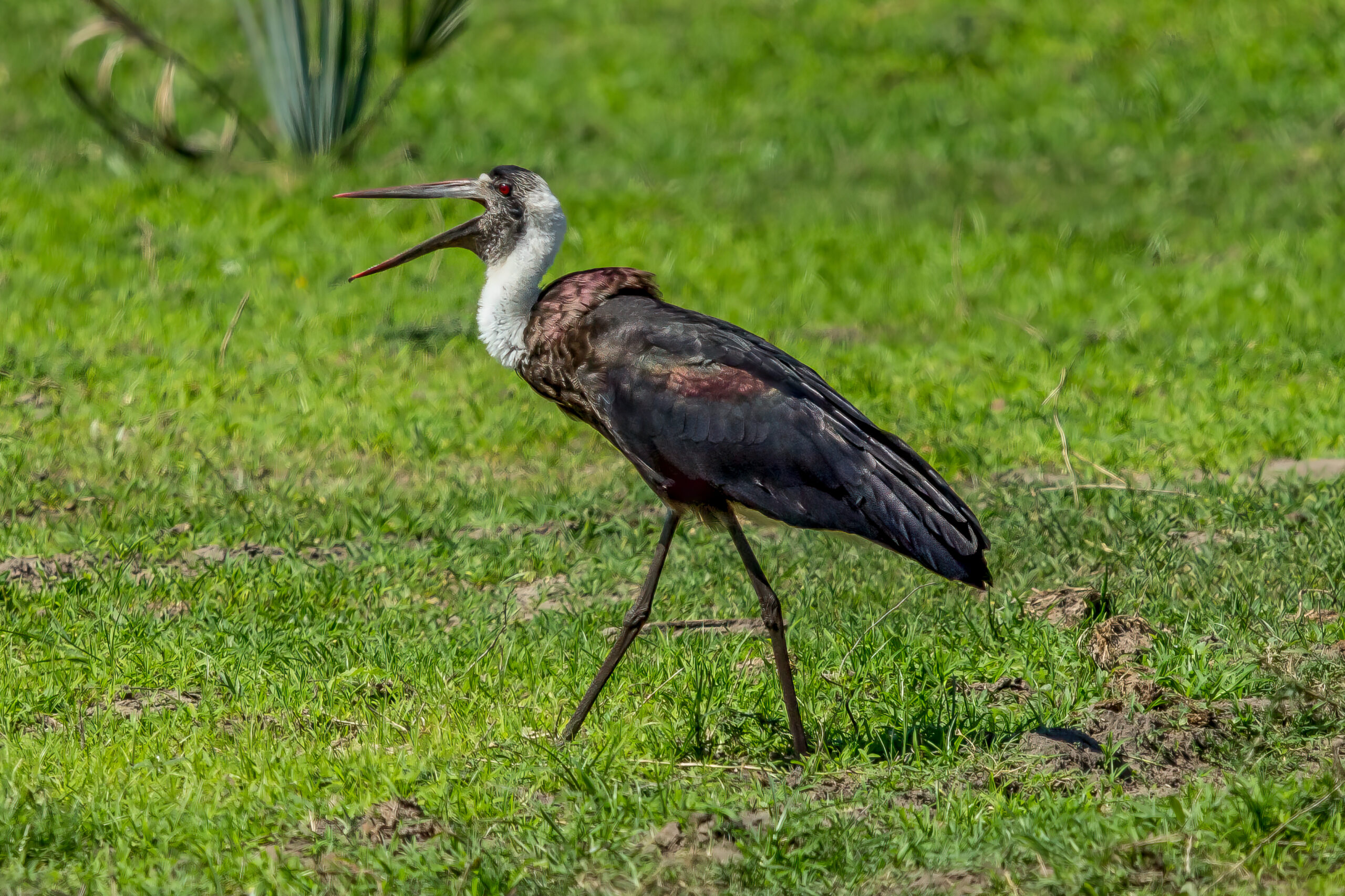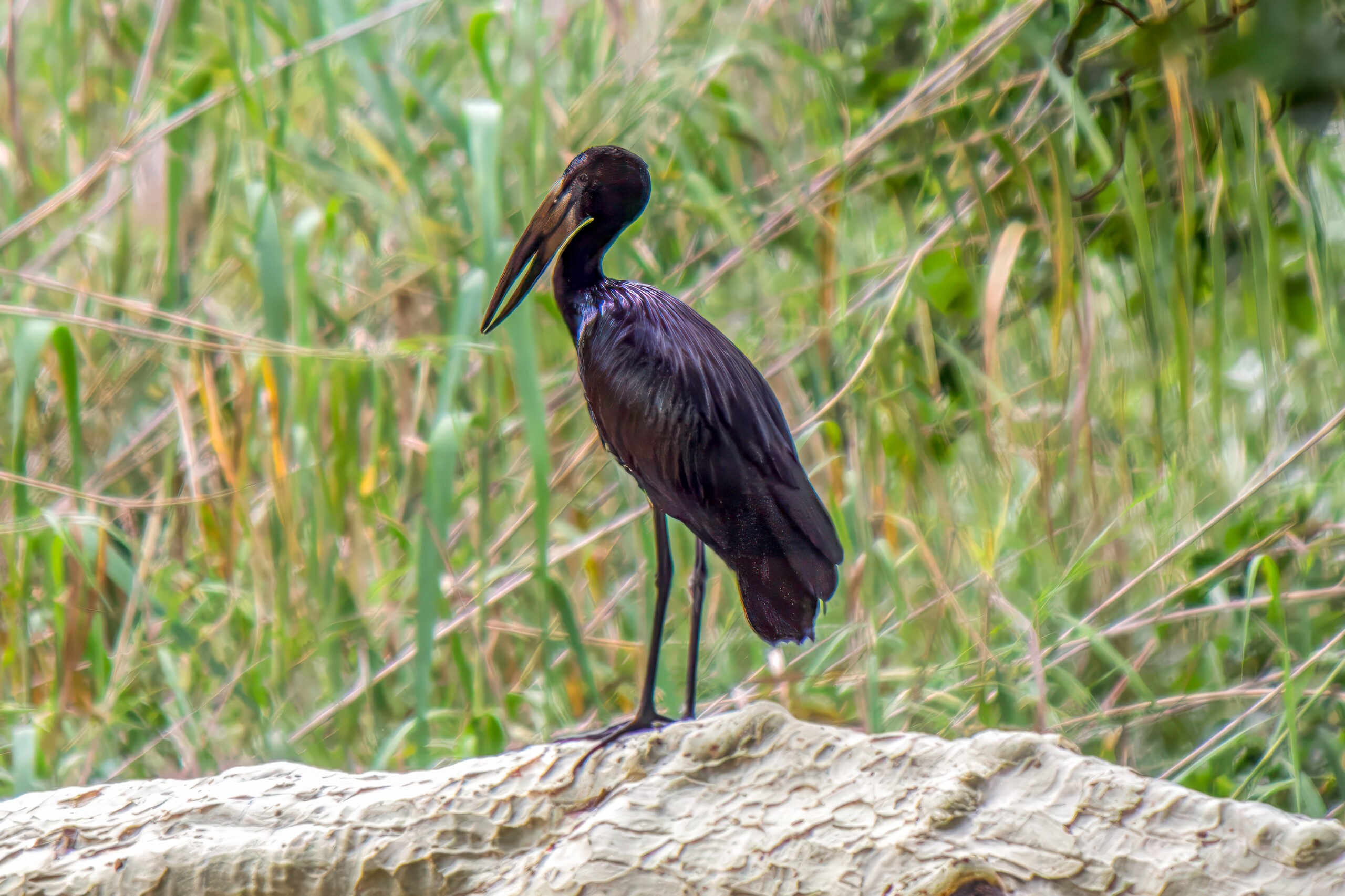Description
The lesser adjutant (Leptoptilos javanicus) is a species of stork found across South and Southeast Asia. It has a height ranging from 110 to 120 cm (43 to 47 in), a wingspan between 210 and 250 cm (83 to 98 in), and weighs between 5 and 6 kg (11 and 13 lbs). This stork has a distinctive appearance; with a naked, yellowish face and neck, a dull grey-black upper body, and white underparts. Its robust, wedge-shaped bill is well adapted for scavenging and catching prey. It is similar to the larger greater adjutant (Leptoptilos dubius), which has a more pronounced neck pouch and a darker overall plumage. Both of these species are close relatives of the African marabou stork (Leptoptilos crumenifer)
Diet & Habitat
Preferred habitats for the lesser adjutant include wetlands, marshes, mangroves, and flooded grasslands. They are often seen near rivers and lakes, where they can exploit a rich supply of aquatic food. Their presence in rice fields suggests some tolerance to human-altered landscapes, although they primarily seek out undisturbed areas for nesting.
Lesser adjutants are opportunistic feeders, consuming a wide variety of prey including fish, frogs, reptiles, and small mammals. They are also known to scavenge on carrion. Their foraging strategy involves slow, deliberate movements in shallow water, where they use their sharp bill to catch and subdue prey.
Nesting
The breeding season of the lesser adjutant varies geographically but generally occurs during the dry season, from October to April. They build large nests made of sticks high in trees, often near water bodies. These nests are usually part of loose colonies, although solitary nesting can occur.
The female lays between 2 to 4 eggs, which are incubated for about 30 to 35 days by both parents. Chicks are altricial, meaning they are born blind and helpless. They are fed regurgitated food by their parents and fledge at about 12 to 14 weeks of age. The extended parental care ensures a high survival rate among fledglings, although predation and habitat loss can impact reproductive success.
Status
The lesser adjutant is classified as near threatened on the IUCN Red List. Its population is declining due to habitat destruction, particularly the drainage of wetlands and deforestation. Pollution and hunting also pose significant threats. Conservation efforts are focused on protecting and restoring wetland habitats and establishing breeding programs to ensure the survival of this striking bird.




